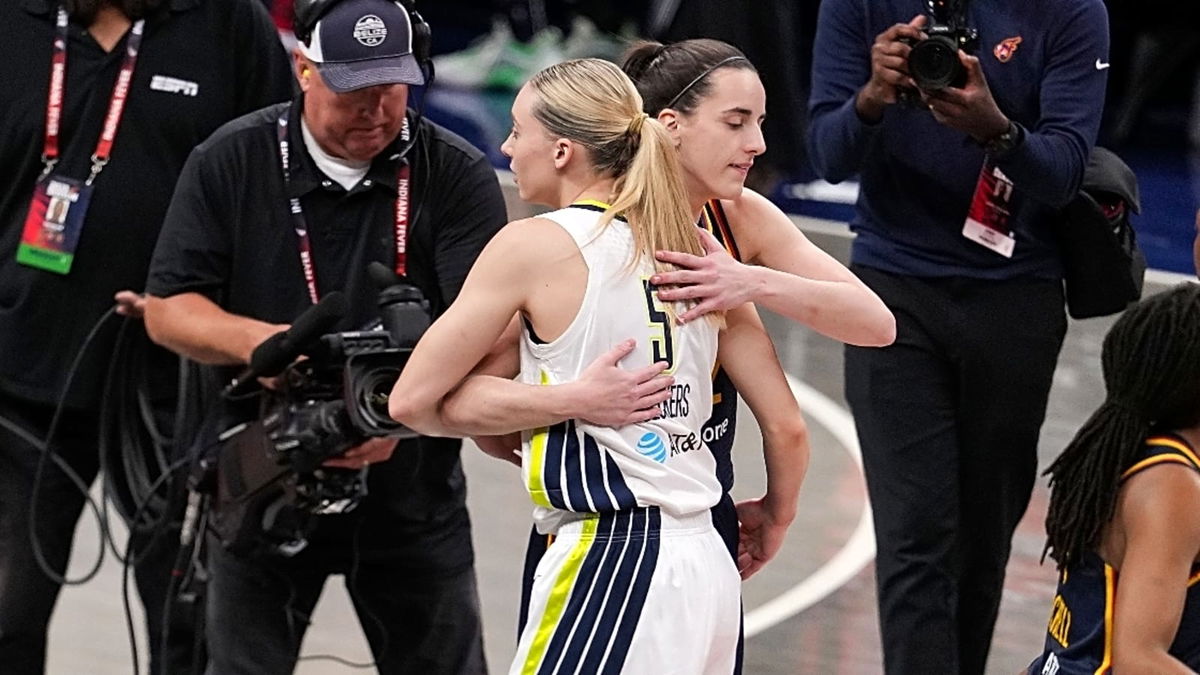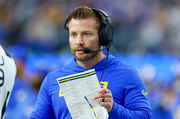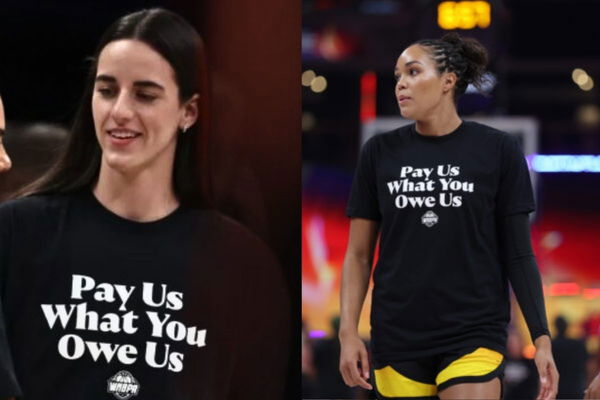
USA Today via Reuters
Mandatory Credits: Grace Hollars/IndyStar / USA TODAY NETWORK via Imagn Images

USA Today via Reuters
Mandatory Credits: Grace Hollars/IndyStar / USA TODAY NETWORK via Imagn Images
The WNBA once watched its crown jewel walk away because the money wasn’t there. In 2015, Diana Taurasi opted to sit out the WNBA because her Russian club, UMMC Ekaterinburg, paid her nearly $1.5 million in the winter—far surpassing her 2014 WNBA salary of $107,000. Fast forward to today, with Caitlin Clark’s rise propelling the league into a new era and the new Collective Bargaining Agreement (CBA) under discussion, the league is experiencing a massive shift in its financial landscape.
Watch What’s Trending Now!
Franchise valuations have soared, with the New York Liberty topping the list at $400 million and the Indiana Fever, led by Caitlin Clark, close behind at $370 million. This growth is not limited to a few teams; the entire league’s combined valuation now stands at approximately $3.5 billion—a staggering 180% increase compared to 2024. Expansion fees, new media rights deals, and rising revenues contribute to this financial upswing. However, as analyst Ben Pickman notes, this growth could bring side effects affecting the WNBA and the broader women’s basketball culture.
Ben Pickman said on the No Offseason: The Athletic Women’s Basketball Show, “What will be very interesting is this current generation of incoming WNBA stars, the Caitlin Clarks, the Paige Bueckers, the Angel Reese’s. If those players elect not to go overseas, then does the actual product of the international leagues lessen a little bit because some of the WNBA’s best, you know, because of Unrivaled or because of changing financial situations in the WNBA, does that crop of players no longer go overseas and do the International leagues see their qualities lessen and so then those players are not as prepared to enter the WNBA.”
ADVERTISEMENT
Just over a decade ago, in 2011, the WNBA featured only 15 foreign-born players. The low international presence was largely due to challenges such as national team commitments and modest pay, which made it hard for professionals to leave their comfort zones for minimal compensation. However, times have changed rapidly. By the start of the 2025 season, the league boasted 35 international players, with the expansion Golden State Valkyries acting as a hub for this growth.
This shift is poised to impact international leagues as much as the WNBA itself. Top American stars like Caitlin Clark have begun to prioritize rest during the offseason, despite lucrative offers—including a “Lionel Messi-like” proposal from Unrivaled and other international leagues. Angel Reese has already signed with Rose BC in Unrivaled, and Paige Bueckers has followed suit, signing a lucrative three-year contract with the league ahead of the 2025 WNBA Draft.
Notably, Bueckers’ first-year earnings through Unrivaled are projected to surpass what she would earn over four years on her rookie WNBA contract with the Dallas Wings. This development opens up new possibilities for elite players to remain stateside, compete in shorter, high-profile seasons, and command salaries that far exceed traditional WNBA pay, reshaping offseason priorities and the landscape of elite women’s basketball.
ADVERTISEMENT
Without the continued presence of American stars in overseas leagues, international competitions risk declines in interest, viewership, attendance, and most critically, the quality of play on the court. Well, this potential downturn could halt or even reverse the growth that propelled the WNBA to its current prominence. At the same time, the international talent pipeline may shrink, making future stars like Dominique Malonga—the No. 2 pick in this year’s draft—harder to discover and develop.
ADVERTISEMENT
Caitlin Clark‑less Unrivaled Faces a CBA Crosswind
Unrivaled sits at the center of these changes but could be caught up in CBA negotiations. After Clark left college, entities outside the WNBA aggressively pursued her. Reports indicate Unrivaled offered over $1 million for an eight-week season, while Big3 presented a staggering $15 million offer. “It started at $5 (million). But the official final offer was $15 million for 10 weeks.” Big3 said. However, Clark chose to prioritize rest over offseason play amid a tough transition from college to the pros.
While that became a reason for Clark to miss out on the offseason action, the upcoming one is looking even more grim. With mounting injuries limiting her to only 13 games, any basketball in the offseason seems to be out of question. Meanwhile, Unrivaled has signed 42 top superstars, excluding Caitlin Clark, but its future hinges on the CBA outcome.
Top Stories
Calls Mount Against Patrick Mahomes for Ignoring Travis Kelce Amid Chiefs Offensive Struggles

Patrick Mahomes Pins Blame for Travis Kelce & Rashee Rice’s Costly Errors as Playoff Hopes Dwindle

Sean McVay Provides Health Update After Being Forced to Travel Away From the Team

Kyle Busch Hits Rock Bottom as Snowball Derby Nightmare Sparks Wave of Fan Sympathy

Browns Players ‘Mad’ at Shedeur Sanders for Costly INT as QB Asks for More Time to Improve

Chiefs QB Patrick Mahomes Firmly Pushes Back on Andy Reid’s Comments After Texans Struggles

ADVERTISEMENT

The players want better pay, better working conditions, and a host of other demands. If the league gives in to their demands to an extent, they wouldn’t want their best players risking their bodies in the offseason in non-WNBA-sanctioned leagues. The league is already experiencing an injury crisis in 2025 with 237 injuries.
ADVERTISEMENT
This crisis puts Unrivaled’s future in question. Currently, it offers WNBA players a way to stay active domestically year-round. Some hypothetical survival avenues include a merger with the WNBA. However, Clark’s absence weakens Unrivaled’s position, as she is the top crowd-puller. Negotiations between the leagues will require significant effort to navigate these complex dynamics.
ADVERTISEMENT
ADVERTISEMENT
ADVERTISEMENT

